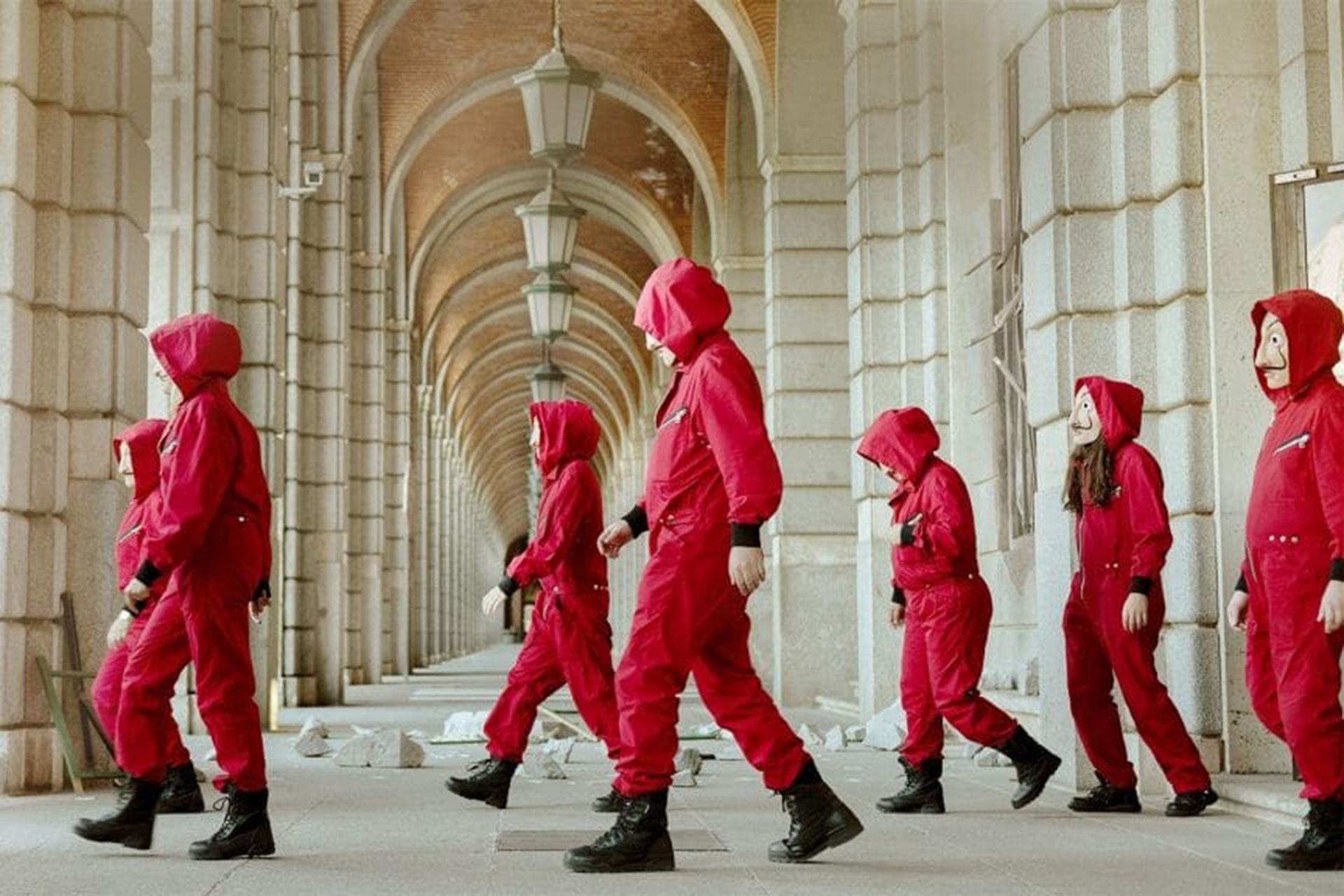Design studio Imagineerium brings physical spaces to life for brands, festivals, and interiors. Founded in 2021, its team of dynamic designers are driven by a love of bold design, conceptual cleverness, and high-quality finishes.
In this thought-provoking piece, Co-Creator and Creative Director Natasha Mortimer asks: why is storytelling important in business, and how can it be used as a tool for engagement?
Humans are obsessed with communicating. It is what binds us together into tribes and societies. Through the art of storytelling, sharing and listening, we gain new perspectives and a better understanding of the world around us.
But why is storytelling important in business and how can it be used as a tool for engagement? Well to understand that, first, let’s look at where it all began…

How Storytelling Began
The human instinct for storytelling is a survival technique. Our evolutionary advantage comes down to our ability to problem-solve alone or as a group, with our major advances as a species stemming from creativity cultivated in collaboration, cooperation and the sharing of ideas and stories.
Stories are how we evolved to understand our place on Earth before written language; how we passed on lessons, news of threats, and memories of celebration. Our ancestors learned that the only way to create an idea that was durable and spreadable was to think of something that would stick in the mind, linking ideas to ego; a story grabs attention, is more engaging and therefore the message is absorbed better.
Storytelling is central to ‘making-sense,’ imperative for personal growth, connection and change.
Through stories our minds define and question our thoughts and how these correlate with others, having the power to shape, strengthen and change our beliefs. With the use of colour, picture and motion, stories have the unique power to create interest and capture attention, instruct and communicate meaning.
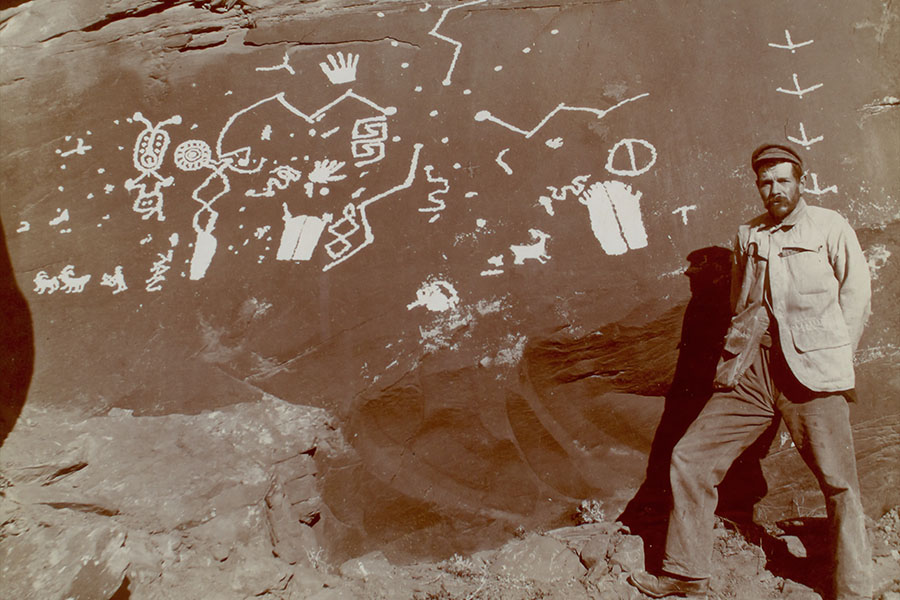
Why is Storytelling Important?
Fast-forward thousands of years, and we find ourselves in a world where everything is steeped in the how and what, but consumers are yearning for the why; the story behind the product, the brand, and its authentic message.
Our purchasing decisions are being more affected by the personality cultivated and story told by the brand every single day. As a society we are beginning to care more about our impact and therefore the products or companies we invest in or buy from. Consumers can be extremely loyal if they radiate with a brand, if they feel safe, connected and aligned to the company’s values and authentic creation.
Remembering that no brand or organisation was established the same way as its competitor, and that all brands have that unique story to tell, is one of the main reasons storytelling in design works so well.
Company storytelling is an important tool for feedback, in conveying the culture, history and values behind a brand as well as presenting information in a way that appeals to the visual mind and therefore becomes etched in our long-term memory. It has been proven that our brains process images 60x faster than words – so if that isn’t an incentive to join the ‘put on a show’ brand movement, I don’t know what is!
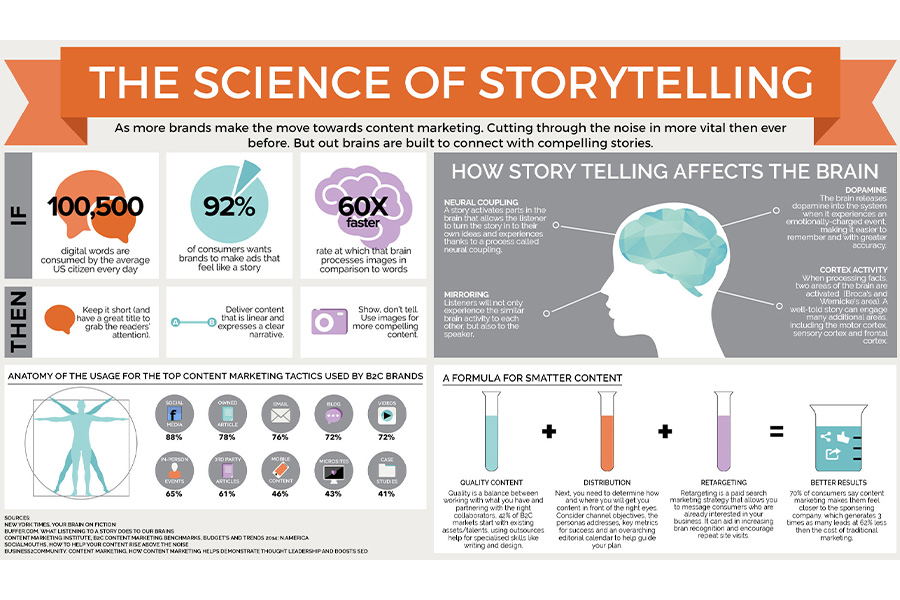
The Storytelling Process
Here at Imagineerium, we see ourselves as not just creative designers, but storytellers. We engage with a brand, align with their core message, and think about the big picture. We even go deeper and look at where our clients’ true values lie, the details of how they want to interact and how they want to be experienced.
A product, a label, a brand, is more than an idea; it should provide an experience or service that adds value to someone’s life.
When we begin our collaboration with a client, we like to help the company think outside the box. We take their idea or brief and develop a number of narratives that can take the activation, experience or exhibition in a variety of directions.This provides them with choice, the ability to have a say and really hone in on their true story and message, cultivating the interaction they genuinely want with their audience.
Once a common understanding of the story has been established, we are able to design from a place of shared vision and passion, empowering not only the clients, but also the consumer, igniting excitement and connection that transfers into positive business indicators.
Our most recent collaboration with Public Spirit at Imbibe Live is a perfect example, where we put their message, purpose, and values at the heart of their stand/campaign. Our design aim was to enhance the socially conscious, rebellious spirit of the brand, showcasing to the industry how this company offers solutions to society, providing a sense of inclusion and kindness by highlighting their initiative of ‘Buy 1 bottle, feed 4 people.’
Public Spirit’s story is what makes it stand out from the rest, how it began, what drives their ambition for sales, why they do, what they do, what they want to achieve and what they are passionate about. The brand is personable, transparent and helps people make a difference through consumerism.
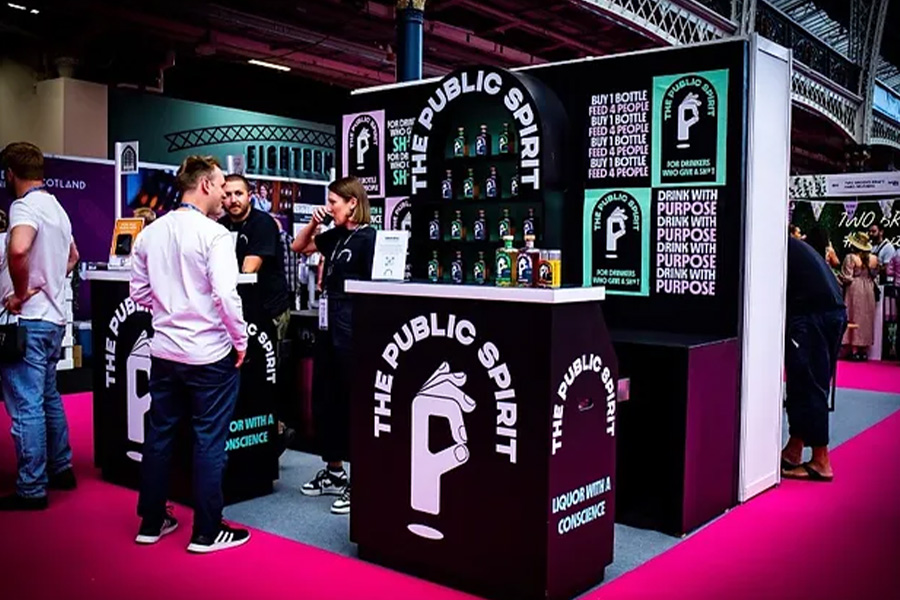
How Do We Include Storytelling In Design?
Often, through the design process we focus on the user/audience/consumer needs and desires, utilising their insights to tell a story about who their users are, what they need and how they’ll provide that.
For our immersive and experiential designs, we create personas to represent the target audience and then add conflict to stories that reflect a user’s journey and problems. We feed audiences company facts wrapped together with a thought-provoking tale to capture attention, giving their brand a soul, making it human and therefore more relatable to the real people they are trying to connect with.
By making the audience the hero of the story, the company takes on the supporting role, ‘the mentor’ figure, leading the audience through a journey of the moral of the story, teaching a core truth and providing a sense of hope. In this format, you remind the audience how great they are and how your company/product will improve their life by presenting the brand as a gift. This specifically works well for brand activations and immersive experiences.
Storytelling helps us influence, teach and inspire and has the ability to have a long-lasting impact.
Great stories involve and inspire the audience by connecting with the eyes, the head and the heart. Storytelling is a marriage of science and art. Through rich detail, triggering metaphors, expressive form and character, engaging stories release chemicals in the brain, including cortisol, dopamine and oxytocin (“the feel-good” hormone.) Reference
The Science Behind Storytelling
It has been scientifically proven that stories activate the sensory centres in our brains and Neuroscientists have found that when listening to a well-told story, the brain places you inside the story and reacts as if you are experiencing it yourself. Resulting in a trigger of thoughts, senses and emotions, motivating us to work with others and positively influencing our social behaviour and interactions.
When we hear a good story, neural activity in our brain increases in a number of ways:
- Neural coupling – The listener is able to turn the story into their own ideas and experiences.
- Mirroring – The listener matches the brain activity of other listeners, as well as the speaker.
- Cortex activity – When processing facts, two areas of the brain are activated (Broca’s and Wernicke’s area), but a well-told story can engage many additional areas, including the motor cortex, sensory cortex and frontal cortex.
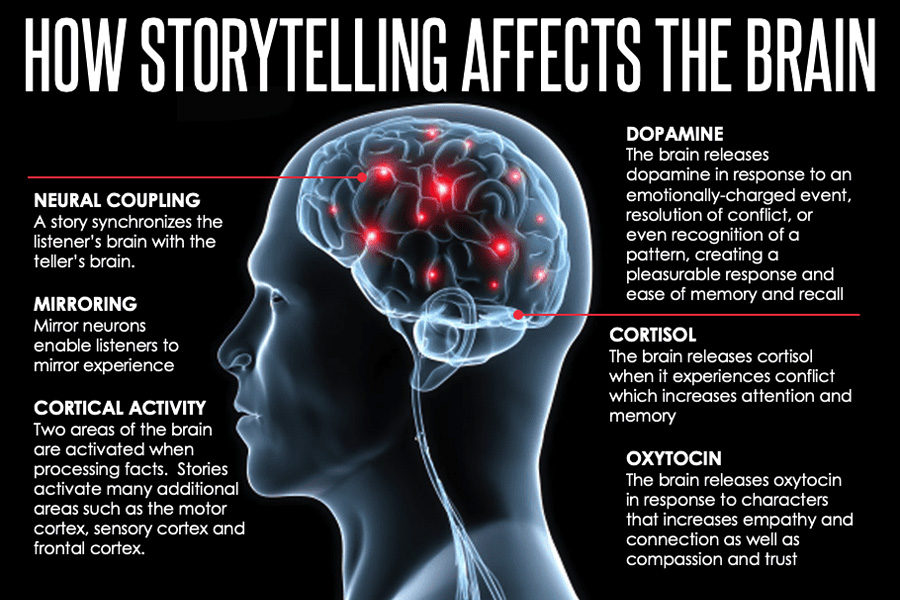
By ensuring we follow the four elements of storytelling; relatability, novelty, fluency and tension; we can bring facts to life, make the abstract concrete and illuminate the cities of visitor’s minds.
Storytelling Through Immersive Experiences
We even go beyond that and create a 3D world where audiences DO actually experience the story. They become the storyteller of your brand, vision or even television show, which our design for the Money Heist experience in London proves can be a success.
With the franchise continuing to grow on a global scale as it immerses audiences within a 100% realistic experience which they will never forget, more and more people tune into the netflix series, or even rewatch the series, thanks to social sharing and growing intrigue, building their following and reach. When designing this project, it was imperative that we followed the television set designs and storylines as closely as possible to ensure the true experience was provided.
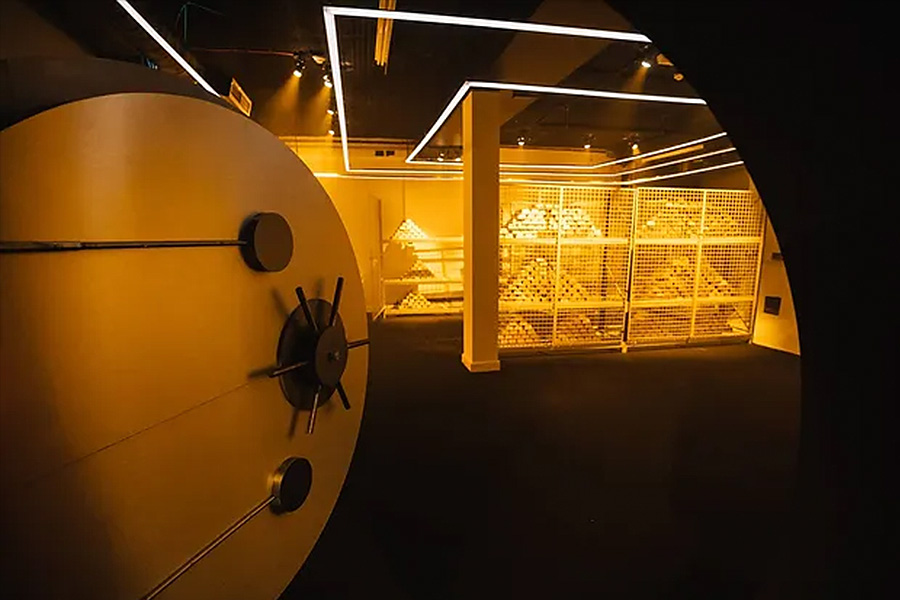
Through our work, we aim to tell great stories and provide even better experiences that make for exceptional social sharing and multi-media marketing. Now, in a digitally empowered rendition of the oral period, the most unique and bold stories survive, where every communication is another chapter that you are unveiling about your brand – with characters, settings and conflict illustrating the core truth about your company.
Final Thoughts
We pride ourselves on our storytelling culture and promote the wealth of benefits it has for consumer and brand relationships to all of our clients.
Through engaging, entertaining and informing, we have seen first-hand the benefits of brand storytelling when it comes to building that bond of trust, inspiring a following of consumers who align with our values, and creating that truly unique experience and interaction.
We know that teaching broad lessons that engage real human beings through immersive experiences full of compelling thematic content is imperative to showcasing what your company embodies and the story it has to tell.
By telling a story, defining and depicting the why, and adding those personal touches, a brand can focus on the audience’s needs. By inspiring, influencing and engaging individuals, companies are able to attract and keep clients/consumers, exchange ideas, and encourage people to tell their story too.
Harness the magical powers of storytelling through design to make your brand iconic…
Imagine that!
To get more insights from experts in the Experience Economy – and to be the first to know about our membership programme, events and more – apply to join the WXO community now.

